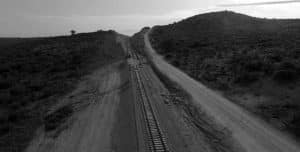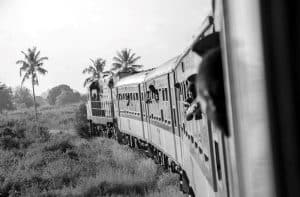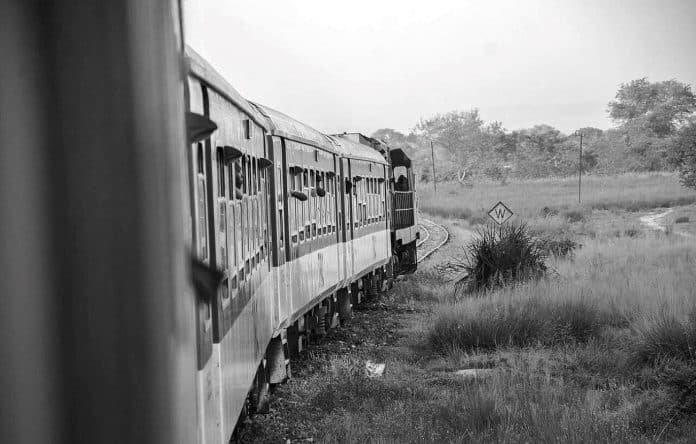Introduction to the Central Line Railway in Tanzania
The Central Line Railway, also known as the Tanzam Railway, is a vital transportation artery that has played a pivotal role in the economic and social development of Tanzania. Stretching across the heart of the country, this iconic railway network has been the backbone of Tanzania’s transportation system for over a century, connecting the bustling port city of Dar es Salaam to the landlocked regions in the west.
As you embark on this journey through the heart of Tanzania, you’ll be transported back in time, exploring the rich history and cultural heritage that this railway line has witnessed over the decades. From the early days of colonial rule to the nation’s independence and beyond, the Central Line has been a constant presence, adapting and evolving to meet the changing needs of the country and its people.
Historical Significance of the Central Line Railway
The origins of the Central Line Railway can be traced back to the late 19th century, when the German colonial administration recognized the need for a reliable transportation network to facilitate trade and commerce. Construction of the railway began in 1905, and over the next two decades, the line was gradually extended westward, connecting the coastal city of Dar es Salaam to the interior regions of Tanganyika (now Tanzania).
The completion of the Central Line in 1927 marked a significant milestone in the history of Tanzania. This railway network not only transformed the country’s economic landscape but also played a crucial role in the nation’s political and social development. During the colonial era, the Central Line served as a vital link, transporting resources, goods, and people across the vast territory, while also facilitating the movement of colonial administrators and military forces.
Construction and Development of the Central Line Railway

The construction of the Central Line Railway was a monumental engineering feat, requiring the dedication and hard work of thousands of laborers, both local and imported. The project faced numerous challenges, including the rugged terrain, dense forests, and the need to cross several major rivers and valleys.
Despite these obstacles, the construction of the railway line progressed steadily, with the use of innovative engineering techniques and the mobilization of a large workforce. The construction of bridges, tunnels, and viaducts was a testament to the ingenuity and determination of the engineers and workers involved in the project.
As the railway line expanded, new stations and maintenance facilities were established along the route, creating economic hubs and opportunities for the local communities. The Central Line quickly became an integral part of Tanzania’s transportation infrastructure, facilitating the movement of goods, resources, and people across the country.
Major Stations and Landmarks along the Central Line Railway
The Central Line Railway stretches for over 1,200 kilometers, connecting the coastal city of Dar es Salaam to the western regions of Tanzania. Along this vast network, you’ll encounter a diverse array of stations and landmarks that reflect the rich history and cultural heritage of the region.
- Dar es Salaam Station: The starting point of the Central Line, this bustling station serves as a gateway to the rest of the country, handling the movement of cargo, passengers, and connecting to other modes of transportation.
- Morogoro Station: This historic station, located in the heart of the Morogoro region, was once a hub for the transportation of agricultural products, such as coffee and sisal, to the coast.
- Dodoma Station: As the capital city of Tanzania, Dodoma is a significant stop along the Central Line, serving as an important transportation and administrative hub.
- Tabora Station: Situated in the western region of Tanzania, Tabora Station was a crucial junction for the distribution of goods and resources, including the famous Tanzanian cashew nuts.
- Kigoma Station: The westernmost terminus of the Central Line, Kigoma Station serves as a gateway to the neighboring countries of Burundi and the Democratic Republic of the Congo, facilitating cross-border trade and transportation.
These are just a few of the many notable stations and landmarks that dot the Central Line Railway, each with its own unique history and significance.
Impact of the Central Line Railway on Trade and Transportation in Tanzania
The Central Line Railway has been a driving force behind Tanzania’s economic and social development since its inception. By providing a reliable and efficient means of transportation, the railway has played a pivotal role in the movement of goods, resources, and people across the country.
Prior to the construction of the Central Line, Tanzania’s transportation infrastructure was largely dependent on costly and time-consuming methods, such as animal-drawn carts and porters. The railway’s arrival revolutionized the way goods and resources were transported, allowing for the rapid and cost-effective movement of agricultural products, minerals, and other commodities to domestic and international markets.
The Central Line has also been instrumental in facilitating the movement of people, connecting rural communities to urban centers and enabling the flow of labor, goods, and services. This has had a profound impact on the social and economic fabric of Tanzania, fostering the growth of towns and cities along the railway route and creating new opportunities for employment and entrepreneurship.
Challenges Faced by the Central Line Railway over the Years
Despite its vital importance, the Central Line Railway has faced numerous challenges over the years. During the colonial era, the railway was primarily designed to serve the interests of the colonial administration, often neglecting the needs of the local population. This led to issues such as unequal access to transportation services and the exploitation of natural resources.
In the post-independence era, the Central Line has had to adapt to the changing political and economic landscape of Tanzania. The railway has weathered periods of underinvestment, poor maintenance, and the impact of natural disasters, such as floods and landslides, which have disrupted service and caused significant damage to the infrastructure.
Moreover, the rise of alternative modes of transportation, such as road networks and air travel, has posed a challenge to the Central Line’s dominance in the country’s transportation landscape. The railway has had to continuously modernize and improve its services to remain competitive and relevant in the face of these changing dynamics.
Preservation and Restoration Efforts for the Central Line Railway

In recent years, there has been a renewed focus on preserving and restoring the Central Line Railway, recognizing its historical significance and its continued importance to the country’s transportation network. The Tanzanian government, along with various international organizations and development partners, have invested heavily in upgrading and rehabilitating the railway infrastructure.
These efforts have included the replacement of aging tracks, the modernization of signaling and communication systems, and the refurbishment of stations and maintenance facilities. Additionally, there have been initiatives to improve the efficiency and reliability of the railway’s operations, such as the introduction of new rolling stock and the optimization of timetables and schedules.
The preservation and restoration of the Central Line Railway have not only ensured the continued operation of this vital transportation artery but have also highlighted the importance of safeguarding Tanzania’s rich railway heritage. By investing in the Central Line, the country is not only securing its economic future but also preserving a unique piece of its cultural and historical legacy.
Exploring the Heritage of the Central Line Railway
As you journey along the Central Line Railway, you’ll have the opportunity to immerse yourself in the rich cultural and historical heritage of Tanzania. The railway’s stations, bridges, and other infrastructure offer a glimpse into the country’s past, reflecting the ingenuity and determination of the people who built and maintained this vital transportation network.
Many of the stations along the Central Line have been designated as heritage sites, with ongoing efforts to preserve their architectural and historical significance. Visitors can explore the intricate designs of the station buildings, learn about the lives of the railway workers and engineers who contributed to the line’s development, and gain a deeper understanding of the role the Central Line played in shaping Tanzania’s history.
Beyond the stations, the Central Line Railway also offers a unique window into the diverse landscapes and communities of Tanzania. As the train winds its way through the countryside, you’ll have the chance to witness the changing scenery, from the bustling coastal cities to the serene rural villages, and gain a deeper appreciation for the country’s natural beauty and cultural diversity.
Tourist Attractions along the Central Line Railway Route
The Central Line Railway not only serves as a vital transportation link but also offers a wealth of opportunities for tourists and travelers to explore the rich cultural and natural heritage of Tanzania. Along the railway route, you’ll find a variety of fascinating destinations and attractions that are easily accessible from the railway stations.
- Mikumi National Park: Located near the Mikumi Station, this expansive national park is home to a diverse array of wildlife, including elephants, lions, and the elusive leopard.
- Tabora Museum: The Tabora Station serves as the gateway to the Tabora Museum, which showcases the region’s rich cultural and historical legacy, including the role of the Central Line in the local economy.
- Kigoma Waterfront: The westernmost terminus of the Central Line, Kigoma Station, provides access to the stunning Kigoma Waterfront, where you can enjoy scenic views of Lake Tanganyika and explore the local markets and cultural sites.
- Kilosa Town: Known for its colonial-era architecture and vibrant markets, Kilosa Town is a popular stop along the Central Line, offering visitors a glimpse into the daily life of Tanzanians.
These are just a few of the many exciting destinations that can be easily accessed from the Central Line Railway, making it an ideal way to explore the diverse and captivating landscapes of Tanzania.
Conclusion: Celebrating the Rich History of the Central Line Railway in Tanzania
The Central Line Railway is not just a means of transportation; it is a living testament to the resilience, ingenuity, and cultural heritage of the Tanzanian people. For over a century, this iconic railway network has played a pivotal role in shaping the country’s economic, social, and political landscape, connecting communities, facilitating trade, and fostering the growth of Tanzania’s cities and towns.
As you explore the Central Line, you’ll be transported back in time, witnessing the echoes of the past and the vibrant present that coexist along this vital transportation artery. From the grand colonial-era stations to the bustling markets and natural wonders that dot the railway route, the Central Line offers a unique and immersive experience that celebrates the rich history and cultural diversity of Tanzania.
For more articles related to Railway and train travel Tanzania, click here!

































